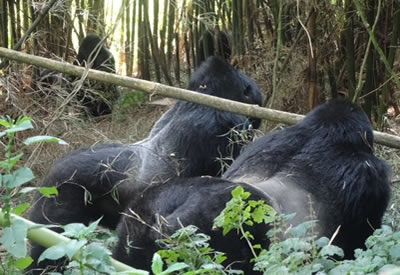Silverback Gorilla: Strength, Size, Facts, and Life in the Wild
Silverback Gorilla: Discover fascinating facts about silverback gorillas—their strength, diet, lifespan, and role as leaders of the gorilla family. Learn where they live and why they’re endangered.
Towering, powerful, and majestic, the silverback gorilla is one of nature’s most awe-inspiring primates—a true king of the African rainforests. As the dominant adult male in a gorilla troop, the silverback commands respect with its sheer strength, leadership, and intelligence.
Found in the dense forests of Uganda, Rwanda, and the Democratic Republic of Congo, silverback gorillas captivate wildlife enthusiasts and conservationists alike.
Whether you’re planning a gorilla trekking adventure or simply curious about these incredible creatures, this article dives deep into silverback gorilla facts, their size, diet, behavior, and conservation status to answer all your questions.
What Is a Silverback Gorilla?
A silverback gorilla is a mature male gorilla, easily recognized by the striking silver hair that develops on its back around 12–13 years of age. This silver patch is a sign of maturity and dominance, marking the gorilla as the leader of its troop.
Not every gorilla is a silverback—only adult males who have reached this stage of physical and social maturity earn the title. Silverbacks belong to two main subspecies: the mountain gorilla (Gorilla beringei beringei) and the western lowland gorilla (Gorilla gorilla gorilla), each with unique traits shaped by their environments.
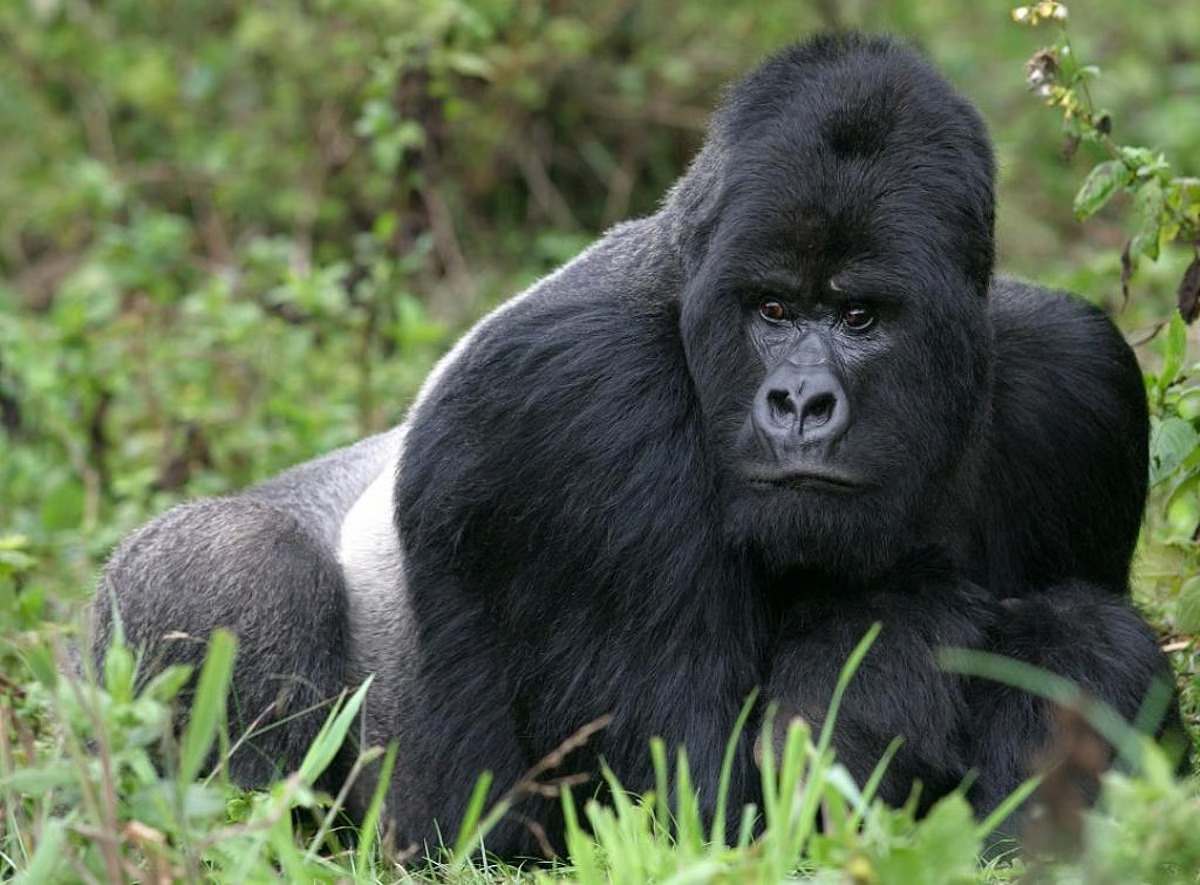
Silverback Gorilla Size, Weight, and Height
Silverback gorillas are among the largest primates on Earth, with a physique that exudes raw power. Below are the key measurements:
- Height: 1.4–1.8 meters (4.7–5.9 feet) when standing upright.
- Weight: 135–220 kg (300–485 lbs), with mountain gorillas often heavier than their lowland counterparts.
- Comparison to Humans: A silverback is up to six times stronger than an average adult human male, capable of lifting heavy objects with ease.
|
Feature |
Silverback Gorilla |
Average Human Male |
|
Height |
1.4–1.8 m (4.7–5.9 ft) |
1.7–1.8 m (5.6–5.9 ft) |
|
Weight |
135–220 kg (300–485 lbs) |
70–90 kg (154–198 lbs) |
|
Strength (Lifting) |
Up to 800 kg (1,760 lbs) |
~100–150 kg (220–330 lbs) |
This comparison highlights why silverbacks are such formidable creatures, built for strength and survival in the wild.
How Strong Is a Silverback Gorilla?
When people ask, “How strong is a silverback gorilla?”, the answer is staggering. Thanks to their dense muscle mass and robust skeletal structure, silverbacks can lift over 800 kg (1,760 lbs)—equivalent to the weight of a small car.
Their arm strength is particularly impressive, allowing them to break bamboo stalks, uproot small trees, and defend their troop from threats. Despite their power, silverbacks rarely use their strength aggressively.
Instead, they rely on displays like chest beating, charging, and vocalizations to assert dominance and protect their family.
This strength is not just for show—it’s critical for survival. Silverbacks use their power to build nests, clear paths through dense vegetation, and fend off rival males or predators like leopards.
Silverback Gorilla Diet: What Do Silverback Gorillas Eat?
Silverback gorillas are primarily herbivorous, with a diet tailored to their rainforest habitats. Their meals include:
- Leaves and Stems: The bulk of their diet, especially from plants like wild celery and thistles.
- Bamboo Shoots: A favorite for mountain gorillas in the Virunga Mountains.
- Fruits: Seasonal fruits like berries provide essential sugars.
- Insects: Occasionally, they eat ants or termites for protein.
Mountain gorillas consume more fibrous plants due to their high-altitude habitats, while western lowland gorillas enjoy a fruit-heavy diet in lowland forests. A silverback can eat up to 30 kg (66 lbs) of food daily to sustain its massive frame, foraging for hours to meet its nutritional needs.
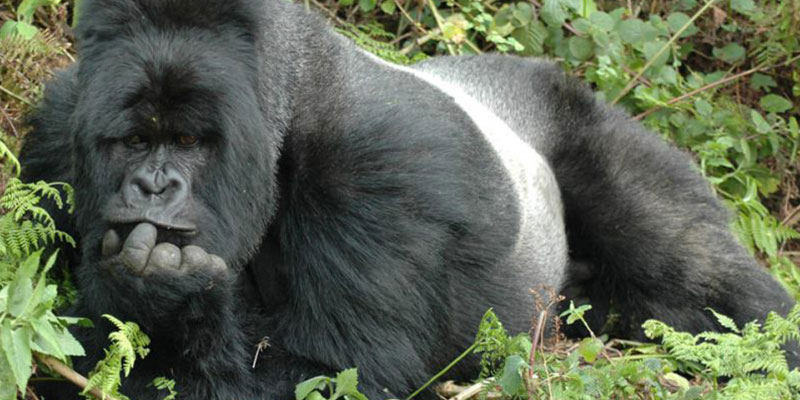
Where Do Silverback Gorillas Live?
Silverback gorillas inhabit the lush rainforests and montane forests of Central Africa. Their primary range includes:
- Mountain Gorillas: Found in the Virunga Mountains (spanning Rwanda, Uganda, and the Democratic Republic of Congo) and Bwindi Impenetrable National Park in Uganda.
- Western Lowland Gorillas: Reside in the lowland rainforests of countries like Gabon, Cameroon, and the Republic of Congo.
These habitats offer dense vegetation for food and cover, though they face threats from deforestation and human encroachment. For a visual, check out this map of gorilla habitats:
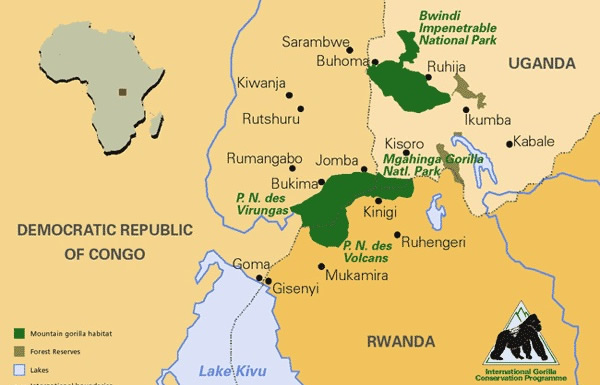
Silverback Gorilla Behavior and Social Structure
Silverback gorillas are the undisputed leaders of their troops, which typically consist of 5–30 members, including females, juveniles, and infants. Their role is multifaceted:
- Leadership: The silverback makes decisions about where the troop travels, feeds, and rests.
- Protection: They defend the group from external threats, including rival silverbacks or predators.
- Discipline: Silverbacks mediate conflicts within the troop, ensuring harmony.
Silverback vs Female Gorilla Behavior
While silverbacks are dominant and protective, female gorillas focus on nurturing offspring and foraging. Females are smaller (weighing 70–90 kg) and lack the silver hair, but they play a critical role in the troop’s social cohesion.
Silverbacks communicate through chest beating, grunts, and hoots, while females use softer vocalizations to bond with infants.
Silverbacks are known for dramatic displays—standing upright, beating their chests, and charging—to ward off threats or assert dominance. These displays are often more about intimidation than actual combat, as silverbacks prefer to avoid deadly fights.
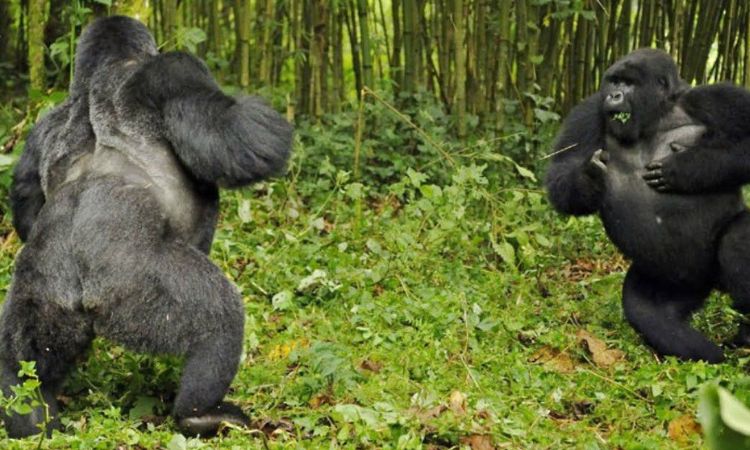
Reproduction and Family Life
The silverback is the primary breeding male in his troop, mating with multiple females to ensure the group’s survival. Key facts about silverback gorilla family life:
- Gestation: Females carry infants for about 8.5 months, similar to humans.
- Infant Care: Silverbacks protect babies but rarely interact directly, leaving nurturing to females.
- Family Dynamics: The silverback maintains order, intervening in disputes and ensuring the troop’s safety.
Silverbacks form strong bonds with their troop, and their leadership fosters a sense of unity. Young males may challenge the silverback for dominance, often leading to intense but rarely fatal confrontations.
Silverback Gorilla Lifespan
In the wild, silverback gorillas live for 35–40 years, though they can reach up to 50 years in captivity with proper care. Their lifespan is influenced by:
- Threats: Poaching, habitat loss, and diseases like Ebola reduce wild populations.
- Health: Access to food and protection from predators supports longevity.
Silverbacks rarely die of old age in the wild due to these external pressures. Conservation efforts are critical to ensuring their survival.
Silverback Gorilla vs Human: A Comparison
When comparing a silverback gorilla vs human, the differences are stark:
|
Trait |
Silverback Gorilla |
Human |
|
Strength |
Lifts 800 kg (1,760 lbs) |
Lifts ~100–150 kg |
|
Weight |
135–220 kg (300–485 lbs) |
70–90 kg (154–198 lbs) |
|
Intelligence |
Problem-solving, social bonds |
Advanced cognition |
|
Aggression |
Gentle unless provoked |
Varies widely |
While silverbacks are exponentially stronger, they are generally peaceful unless their troop is threatened. Their intelligence, seen in tool use and social interactions, rivals that of other great apes.
Interesting Silverback Gorilla Facts
Here are some quick, SEO-friendly silverback gorilla facts to captivate readers:
- A silverback eats up to 30 kg (66 lbs) of food daily to fuel its massive body.
- They build new nests every night using branches and leaves, even for daytime naps.
- Silverbacks rarely fight to the death—displays like chest beating often resolve conflicts.
- Their scientific name, Gorilla gorilla gorilla, applies to western lowland gorillas, a quirky taxonomic label.
Conservation Status
Silverback gorillas belong to endangered subspecies, with populations under constant threat:
- Mountain Gorillas: Approximately 1,000 individuals remain, primarily in the Virunga Mountains and Bwindi Forest.
- Western Lowland Gorillas: Around 100,000, but declining due to poaching and habitat destruction.
Organizations like the Dian Fossey Gorilla Fund and World Wildlife Fund (WWF) lead conservation efforts, protecting habitats and combating illegal hunting. Gorilla trekking tourism also funds conservation by providing revenue for local communities.
FAQs: Silverback Gorilla Questions Answered
What is a silverback gorilla?
A silverback is a mature male gorilla, identified by the silver hair on its back, serving as the dominant leader of a gorilla troop.
How strong is a silverback gorilla?
A silverback can lift over 800 kg (1,760 lbs), making it up to six times stronger than an average human male.
How long do silverback gorillas live?
They live 35–40 years in the wild and up to 50 years in captivity.
What do silverback gorillas eat?
Their diet includes leaves, stems, bamboo shoots, fruits, and occasionally insects.
Where do silverback gorillas live?
They inhabit the rainforests of Uganda, Rwanda, and the Democratic Republic of Congo, including the Virunga Mountains and Bwindi Forest.
What is the difference between a silverback and a gorilla?
A silverback is a specific type of gorilla—an adult male leader—while “gorilla” refers to the species, including females, juveniles, and non-dominant males.
How many silverback gorillas are left?
Mountain gorillas number around 1,000, while western lowland gorillas are estimated at 100,000, though both are endangered.
Conclusion
The silverback gorilla is a symbol of strength, leadership, and resilience in the wild. From their massive size and incredible strength to their complex social structures and herbivorous diets, these primates are a testament to nature’s complexity.
Found in the lush forests of Central Africa, silverbacks face significant threats from habitat loss and poaching, making conservation efforts vital.
Whether you’re inspired to embark on a gorilla trekking adventure or simply want to learn more, understanding the silverback gorilla deepens our appreciation for these gentle giants.
For more on gorilla conservation, check out our article on Why Are Mountain Gorillas Endangered? or visit trusted sources like National Geographic.
